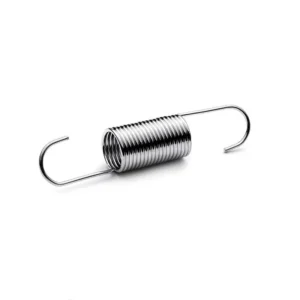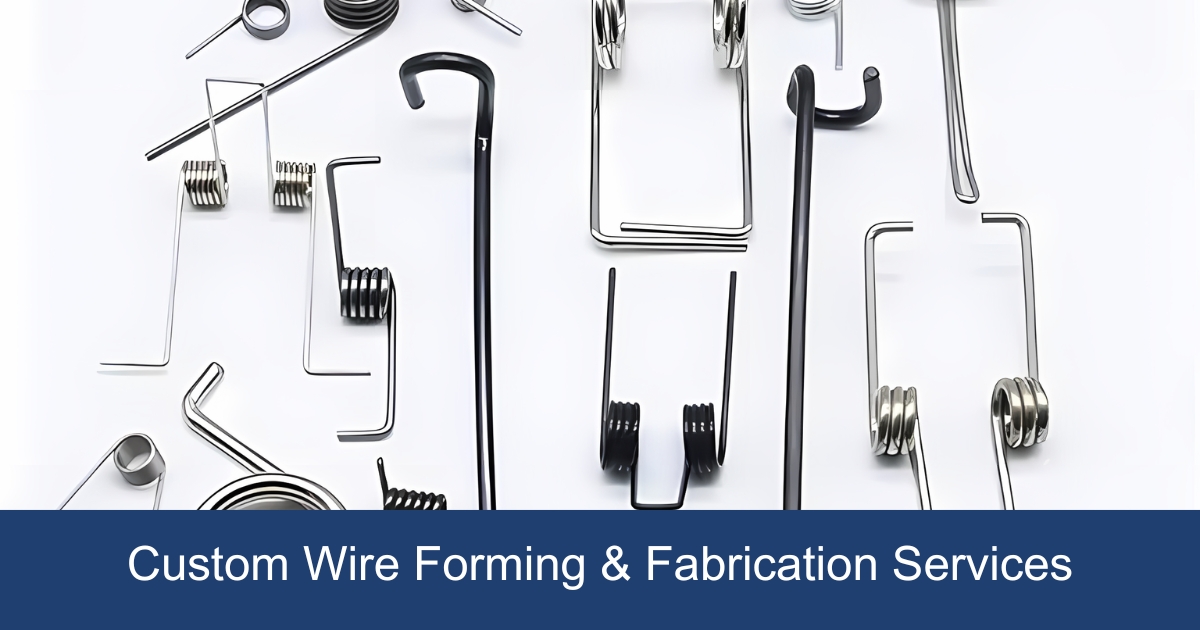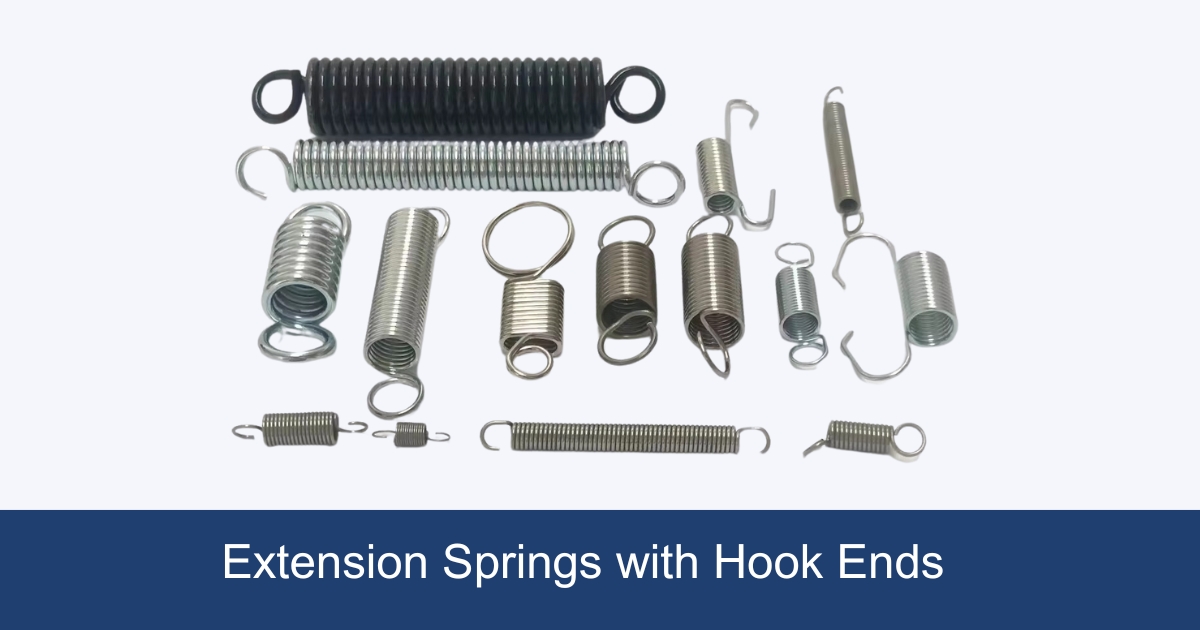Extension springs, vital components in mechanisms like garage doors and trampolines, are designed for durability. On average, extension springs last between 7 to 12 years, translating to approximately 15,000 to 20,000 cycles of use.

What is a extension spring and how does it work?
An extension spring is a type of coil spring designed to operate with a tension force, stretching to a specific length as a load is applied to it. These springs are typically made from various types of wire depending on the required strength and are used in a wide range of applications. When a load is applied, the spring’s coils are pulled apart, storing energy as they elongate. Once the load is removed, the spring tries to return to its original length, releasing the stored energy in the process.
Understanding The Cycle Life of Extension Spring
Understanding the cycle life of an extension spring is crucial for users to ensure reliability and safety in their applications. The cycle life of an extension spring refers to the number of times the spring can be extended and returned to its original shape before failing or losing its mechanical properties. This lifespan is influenced by several factors including the material of the spring, the diameter of the wire, the design of the spring, the environment in which it is used, and the extent to which it is stretched or loaded during use.
How Long Do Extension Springs Last?
Extension springs, vital components in mechanisms like garage doors and trampolines, are designed for durability. On average, extension springs last between 7 to 12 years, translating to approximately 15,000 to 20,000 cycles of use. A cycle is defined as one complete extension and contraction of the spring. The lifespan can vary based on factors such as the frequency of use, maintenance level, and the quality of the spring material. Proper care, including regular inspections and lubrication, can extend their service life beyond the average expectancy.
Why Extension Spring Break?
To clearly understand why extension springs break, it’s essential to dissect the contributing factors one by one. By delving into these reasons, manufacturers and users can implement preventative measures to enhance the durability and operational lifespan of custom extension springs. Here are the primary reasons, outlined in a sequential format for clarity:
- Material Fatigue: The most common cause of extension spring failure is material fatigue. This occurs when the spring is subjected to repeated cycles of stress, leading to the eventual formation of cracks and, ultimately, breakage. To combat this, selecting high-quality materials and designing springs to operate well within their stress limits are vital steps.
- Corrosion: Extension springs operating in harsh environments may succumb to corrosion, which weakens the material and reduces its lifespan. The application of corrosion-resistant coatings and the use of materials that are inherently resistant to corrosive substances can significantly mitigate this risk.
- Overloading: Applying forces that exceed the extension spring’s designed maximum load capacity can deform or break the extension spring. It’s crucial to select springs that match the load requirements of the specific application to prevent overloading.
- Improper Design: Design flaws, such as incorrect wire size or coil diameter, can lead to uneven stress distribution across the extension spring, accelerating failure. Leveraging custom design services ensures that extension springs are precisely optimized for their intended use, mitigating design-related issues.
- Incorrect Installation: Extension springs installed improperly or misaligned can experience increased stress on certain parts, leading to premature failure. Adhering to the custom extension spring manufacturer’s installation guidelines and conducting regular checks for correct alignment can prevent such issues.
- Environmental Factors: Exposure to extreme temperatures or harmful chemicals can degrade extension spring materials more rapidly than anticipated. Choosing materials and custom extension spring designs that can withstand specific environmental conditions is key to extending extension spring life.
- Wear and Tear: Regular use inevitably leads to wear and tear, which can diminish a extension spring’s strength and functionality over time. Establishing regular maintenance schedules and conducting inspections can help identify and mitigate wear before it leads to failure.
- Improper Maintenance: Failing to maintain extension springs properly can exacerbate issues like wear and tear, rust, and material fatigue. Improper maintenance includes neglecting regular inspections, failing to clean or lubricate the extension springs as required, and not replacing worn-out parts in a timely manner.
- Age: Over time, even well-designed and properly maintained extension springs can degrade simply due to age. The material properties can change, leading to reduced performance and eventual failure. Recognizing the lifespan of a spring based on its material, design, and operating conditions is essential for timely replacement.
Tips To Maximize Extension Spring Cycle Life
Maximizing the cycle life of extension springs is crucial for ensuring their long-term functionality and reliability in various applications. By adhering to specific maintenance strategies and design considerations, both manufacturers and users can significantly enhance the durability of these essential components. Here, we present key tips aimed at prolonging the life of extension springs, structured for easy understanding and implementation.
1. Design Optimization
| Aspect | Strategy |
|---|---|
| Material Selection | Choose high-quality materials suited for the application’s environment to resist wear, corrosion, and fatigue. |
| Coil Design | Optimize coil diameter and wire size to distribute stress evenly across the spring. |
| Hook Configuration | Design hooks to minimize stress concentration, reducing the risk of failure at connection points. |
2. Environmental Considerations
| Aspect | Strategy |
|---|---|
| Corrosion Protection | Apply coatings or use corrosion-resistant materials like stainless steel to extend spring life. |
| Temperature Management | Ensure the spring operates within a temperature range that does not compromise material integrity. |
3. Load Management
| Aspect | Strategy |
|---|---|
| Specified Load | Avoid exceeding the spring’s designed load capacity to prevent overstressing and deformation. |
| Dynamic Loading | Account for dynamic loads in design to ensure the spring can handle cyclic stress without failure. |
4. Maintenance Practices
| Aspect | Strategy |
|---|---|
| Regular Inspection | Conduct visual and performance checks to identify wear, deformation, or failure early. |
| Lubrication | Apply appropriate lubricants to reduce friction and wear, especially in high-motion environments. |
| Cleanliness | Keep springs clean from debris and chemicals that can accelerate wear and corrosion. |
5. Installation and Handling
| Aspect | Strategy |
|---|---|
| Proper Installation | Ensure correct alignment and mounting to avoid undue stress and distortion. |
| Handling Care | Avoid mechanical damage during installation and maintenance to preserve spring integrity. |
How to Maintenance and Care for Extended Life
Regular Inspection
- Visual Inspection: Regularly examine the springs for signs of wear, corrosion, or deformation. Look for cracks or fraying, especially at the ends where hooks or loops are formed.
- Operational Test: Periodically test the spring in its operational environment to ensure it performs as expected. This can help identify issues like overstretching or abnormal resistance.
Proper Installation
- Correct Sizing: Ensure the spring is of the correct size and specification for its application. Incorrect sizing can lead to premature failure.
- Alignment: Install the spring ensuring it is correctly aligned in its operational setup. Misalignment can cause uneven stress distribution, reducing the spring’s life.
Environmental Protection
- Corrosion Prevention: Use corrosion-resistant materials or coatings, especially in environments prone to moisture or chemicals. Stainless steel springs or protective coatings can significantly extend the life of a spring.
- Temperature Control: Avoid exposing springs to extreme temperatures, which can alter the material properties and reduce their lifespan.
Load Management
- Appropriate Use: Do not exceed the designed load capacity of the spring. Overloading can cause irreversible damage and significantly reduce its lifespan.
- Cyclic Loading: Be mindful of the cyclic loads the spring is subjected to; design the spring for the specific loading conditions it will face.
Lubrication and Cleaning
- Lubrication: Apply suitable lubrication to the spring to reduce friction and wear, especially in high-motion applications.
- Cleaning: Keep the springs clean from dirt and debris, which can cause wear or corrosion over time.
By adhering to these maintenance and care practices, manufacturers and users of extension springs can significantly enhance the longevity and reliability of their components. For those in the business of custom tension springs or extension spring supply, providing clients with guidance on these practices can add value to your offerings, distinguishing your products in the competitive market.
FAQs
Why would I need a custom extension spring? Custom extension springs are essential for applications where standard springs cannot meet specific requirements related to load capacity, environmental conditions, or space limitations.
How can custom design extend the life of an extension spring? Custom-designed extension springs are optimized for their specific application, which significantly extends their life. By precisely calculating the load requirements, material selection, and environmental factors, Zigoal ensures each spring is designed to minimize stress, resist wear, and handle the intended use without failure. Our design and engineering support, including advanced material selection and efficient production processes, directly contribute to enhancing the durability and functionality of the springs.
How do I know when it’s time to replace my extension spring? Signs that it’s time to replace your extension spring include noticeable wear, such as rust or corrosion, a decrease in performance or elasticity, visible deformations (like stretching or bending), or the spring no longer meets its required specifications for load and tension. Regular inspections can help identify these signs early.
What should I look for in a supplier of custom extension springs? When selecting a supplier for custom extension springs, consider their expertise in design and engineering support, quality control processes, material selection capabilities, and the ability to provide customized solutions tailored to your specific needs. Additionally, assess their supply chain management, production efficiency, and after-sales support. Zigoal stands out by offering a robust combination of these elements, ensuring that we not only meet but exceed global standards for custom spring manufacturing.



